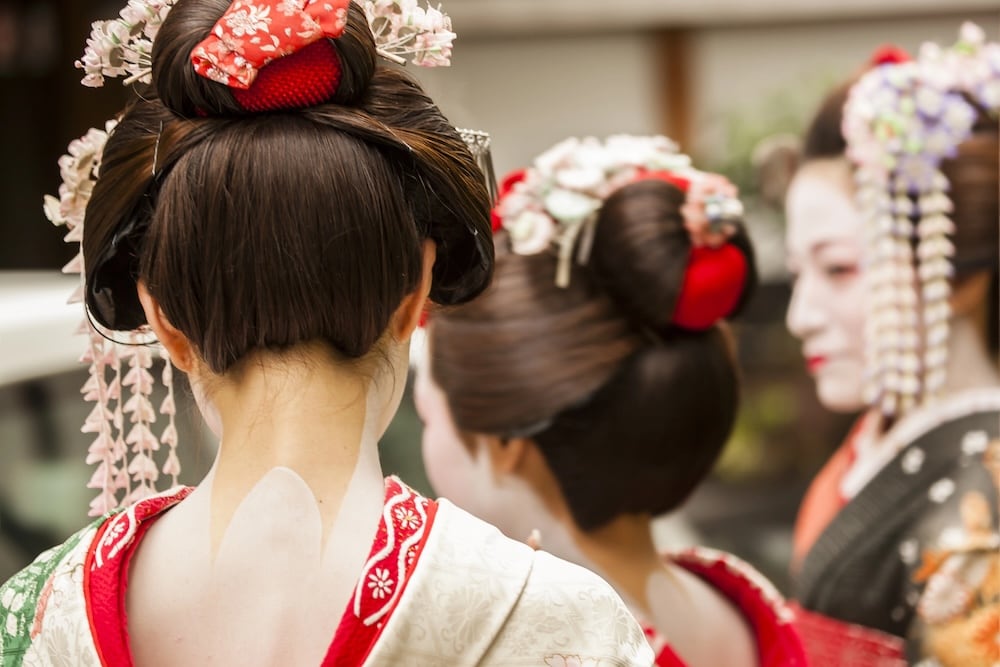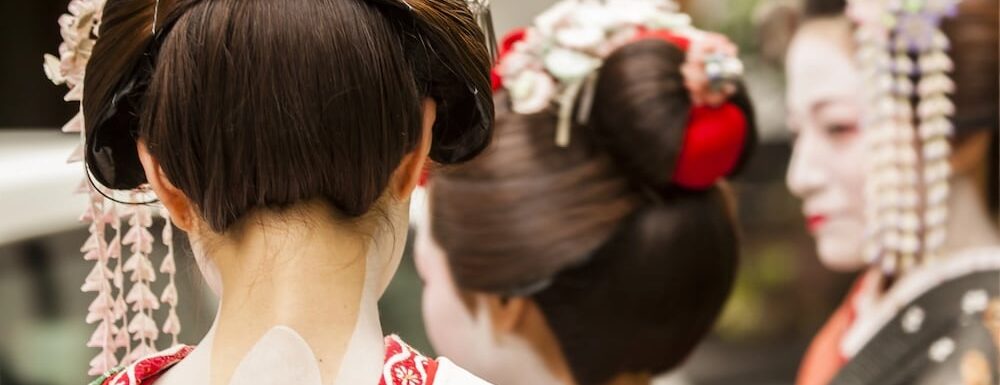A Link to the Past in Today’s Modern World.
Some links on this page are affiliate links. We may earn a commission if you make a purchase, at no additional cost to you.
Unique to Japan is a fascinating profession known as geisha, literally “art person.” This occupation first appeared in the mid-1200s and is still practiced today. Geisha are cultured intellectuals with extensive schooling in the arts and entertainment. They are holdovers of the old world and embody the living history of Japan and its amazing and intricate culture.
It Started With One Man
In the mid-13th century, a monk named Ippen traveled around Japan teaching “nembutsu odori” (reciting Buddha’s name while ritually dancing). He gained followers along the way, and through their travels, they learned the arts and how to entertain. Ippen and his followers began entertaining feudal lords. These entertainers were men given the name doboshu and are regarded as the first geisha.
During the Muromachi Period (1336-1573), Japan was in continuous civil war. Doboshu were used during this time to gather intelligence, advise on military strategy, and entertain the leaders with tea ceremonies, poetry, art, and flower arranging.
When the period of civil wars finally ended and Japan moved toward unification in the 16th century, the role of doboshu shifted. They were no longer needed for intelligence gathering; instead, they focused on comedy and entertainment. They were the court jesters of the Eastern world. The name doboshu changed to hanashishu (storytellers), taikomochi (drum bearers), or hokan (jesters).
The taikomochi fell from grace when they began taking new clients and leaving the feudal houses. In the 18th century, they became known as lower class, telling dirty jokes in red-light districts.
This is when female geisha arrived on the scene and stole the spotlight.

Female Geisha Take the Stage
Around 1730, the first female geisha were known as Odoriko (dancers) or shamisen players (a three-stringed lute).
Nobility and warlord houses during this time had pleasure quarters filled with courtesans; the Orian was the most powerful of the courtesans. Geisha were brought in to assist the Orian, but they slowly took over as favor grew towards them. During the Meiji Period (1868-1912), geisha reached the height of their popularity. They entertained wealthy business clients and government officials. At this point, there were 80,000 geisha throughout Japan.
During WWII, the privilege of wealth and leisure declined, forcing them to look elsewhere for employment.
Geisha had exclusive districts where they lived and worked called Hanamachi (flower town). During the war, these districts were destroyed. Most of the women left to find other employment, and their numbers never fully returned.
Those who did return were thought to be highly skilled and were considered highly successful.
Are geisha courtesans?
Confusion surrounds geisha and their roles with men; vague language leaves many unanswered questions, and the information varies wildly from one source to the next.
While some Hanamachi participated in this practice, most did not. Geisha were widely known as artists and entertainers, and they were generally not expected to be escorts.
Training
Becoming a geisha is difficult and takes years of hard work and study. Girls used to begin at age 14 or 15. They moved into the school and lodging house called an okiya. The proprietor, an okāsan (mother), paid all their expenses. The apprentice racked up an enormous amount of debt over years of training. This debt covered clothing, food, housing, instruments, and schooling, and it forced the girls to be tied to the okiya until their expenses were paid off. It took several years before she was free to stay in the okiya or move out on her own.
Stage One—Shikomi-san (1 Year)
During Shikomi-san, the young apprentices clean, attend classes, and help other geisha. They attend Nyokoba (vocational schools) to learn traditional performance art and instruments such as drums and the shamisen.
Stage Two—Minarai (1 Month)
The minarai (watching) finds a mentor or an onēsan (older sister). She follows the onēsan to banquets and watches interactions between her and the guests. The apprentice wears brightly colored kimonos that separate her from a full geisha.
Stage Three—Maiko (3-5 years, can last up to 8)
At this stage, they are still training but are allowed to participate in events.
You May Also Like
Makeup
The makeup worn by geisha represents the rare beauty they carry; it takes around two hours to apply. White makeup was originally worn in dim, candle-lit tea houses, where it was considered to be more beautiful under the dark lighting.
Apparel
Apprentices wear colorful kimonos with small, brightly colored flowers in their hair that change with the seasons and get larger as she grows. These apprentices also wear a red embroidered Eri (kimono collar), a long Darari Obi (waist sash), and tall wooden sandals. In the first year of apprenticeship, they wear bells that chime as they walk. These adornments get smaller and more refined as they age through training.
Full geisha wear elaborately embroidered kimonos with shorter obi, muted colors, and a white collar.
Hairstyle
Maiko wear their real hair in a bun and red hairpins. The style is so difficult to achieve that it often leads to a bald spot in the center of their heads. The girls must sleep on special pillows to maintain the style. When training is complete, full geisha wear wigs.
Tea Ceremonies
One of the main duties of a geisha is to perform tea ceremonies, considered an art form in itself. The ceremonies differ depending on the time of day, season, and formality of the occasion. The hostess prepares matcha using multiple steps and intricate movements; she does not drink; it is only for the guest’s pleasure.
Tea ceremonies are historically significant in Japanese culture; only Zen monks and noble warlords were allowed to take part in them.
Preparing the tea calls for silence and is considered a meditation promoting mindfulness and well-being. It is meant to create inner peace and tranquility while bonding the guest and hostess. Preparing the tea is a practice of silence, respect, and purification.
Once the tea is prepared, the geisha are free to entertain with music, dancing, and conversation.
Modern Geisha
Today, around 1,000 geisha still practicing today; they can be found in Tokyo, Kanazawa, Hakone, and Kyoto.
Modern geisha face many challenges. The city of Kyoto was forced to ban rowdy tourists from alleyways where they live. The rise of tourism brought tourists who hassled, photographed, and touched the women. Fines were set up to ¥10,000 (66 USD) for taking photos of geisha without their permission, but the problem still persists.
Modern society is changing, and the demand for geisha services is declining. Contemporary music, art, and media threaten the preservation of the past. Modern geisha play a delicate balance between history and contemporary society.
For hundreds of years geisha have worked hard to create a facade of an effortless, entertaining atmosphere for their wealthy clients. They are taught to hold their liquor and have a good conversation. They are artistic, engaging counselors, listeners, and entertainers while handling the complex nuances of Japanese culture with subtlety, grace, and intelligence.




Leave a Reply